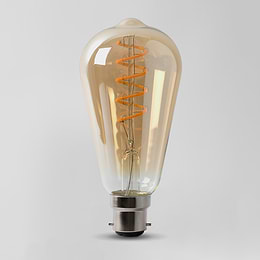Incandescent vs CFL vs LED vs Halogen Light Bulbs
Incandescent vs CFL vs LED vs Halogen Light Bulbs
Incandescent light bulbs are currently being phased out, with more energy efficient alternatives becoming the norm. There are still a number of options available though including CFL, LED and Halogen, so when choosing a bulb, it is useful to know which type is most suitable for your needs.
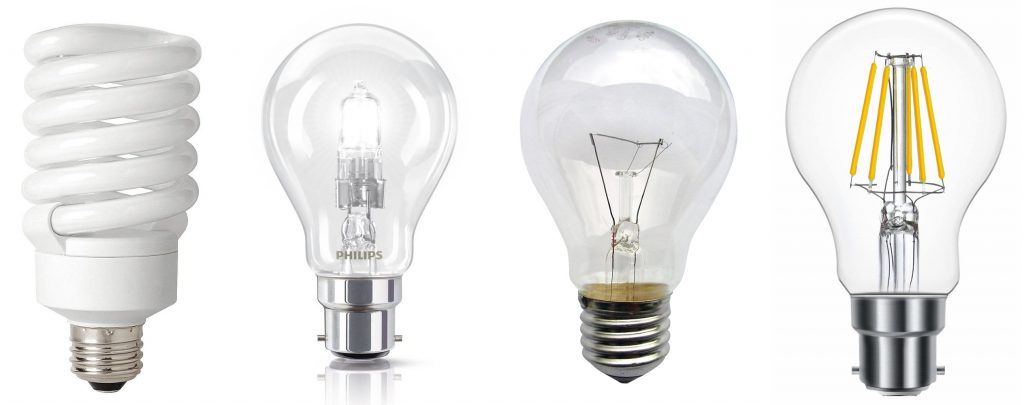
The type of bulb is not the only consideration you need to take into account. You also need to think about the cap size, the bulb shape, the lumens and the colour temperature. You can read more in our bulb buying guide. In this article however, we will look specifically at incandescent, halogen, CFL and LED bulbs and their pros and cons.
What are incandescent bulbs?
Incandescent light bulbs are the classic light bulbs that have been used in homes for years. The light comes from the heating up of a wire filament in the centre. Electrical current is supplied to the wire, and as it heats, it glows.
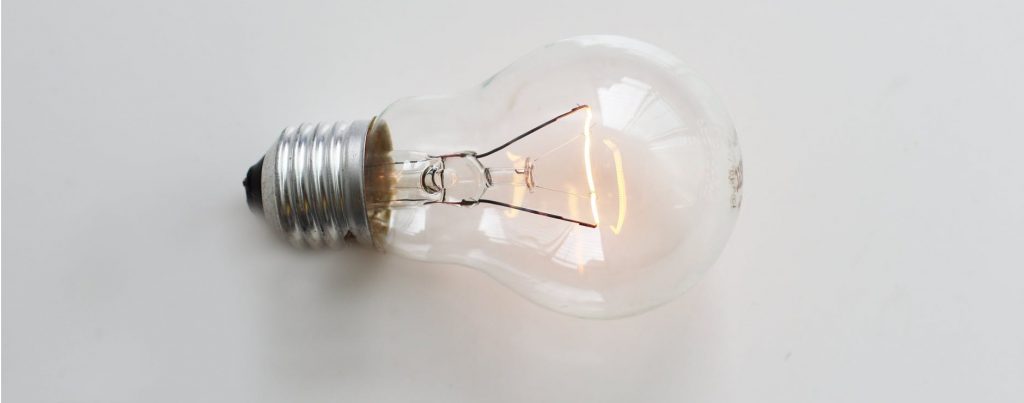
Whilst they offer a traditional look, incandescent bulbs are inefficient. Less than 5% of the energy they use it converted into visible light. The remaining energy is lost as heat, hence why these are often hot when they have been switched on for some time.
What are CFL light bulbs?
CFL stands for compact florescent lamp, and these light bulbs are one of the more common types of energy saving bulbs. They typically use less energy than incandescent and were the first widely available energy-saving alternative bulbs on the market.
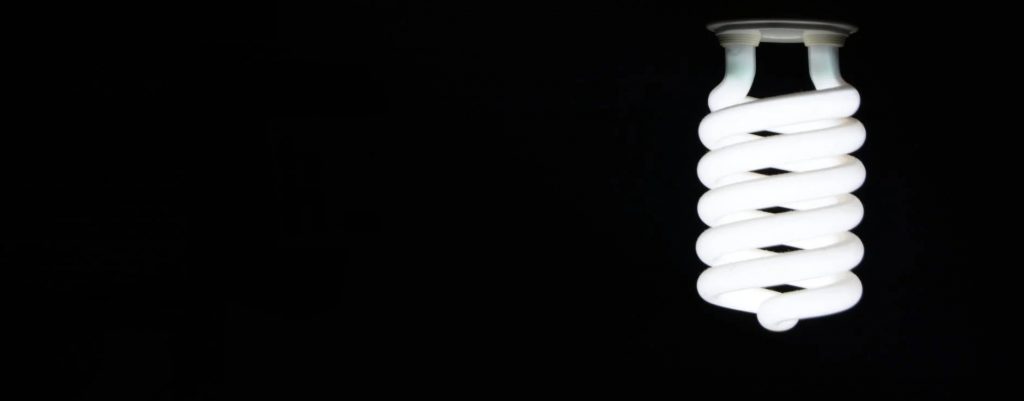
These light bulbs use an electric current to excite gases within a bulb, causing a phosphorous coating on the inside of the glass to glow. The efficiency of these bulbs is due to less of the energy being expended on heat.
CFL light bulbs typically use between 60% and 80% less energy than incandescent bulbs.
What are halogen bulbs?
Halogen bulbs are made like incandescent bulbs but consist of a tungsten filament, sealed into a compact glass casing that contains a mixture of inert gas and a halogen (this could be iodine or bromine). These operate at a higher temperature and produce a light with higher lumens than a like for like incandescent.
Halogen bulbs typically use 20-30% less energy than incandescent bulbs.
What are LED light bulbs?
LED bulbs produce light with one or more light emitting diodes. These diodes work with direct current (DC) electrical power, so the bulbs contain a driver that converts the commonly used alternating current (AC) to the current used by the LEDs.
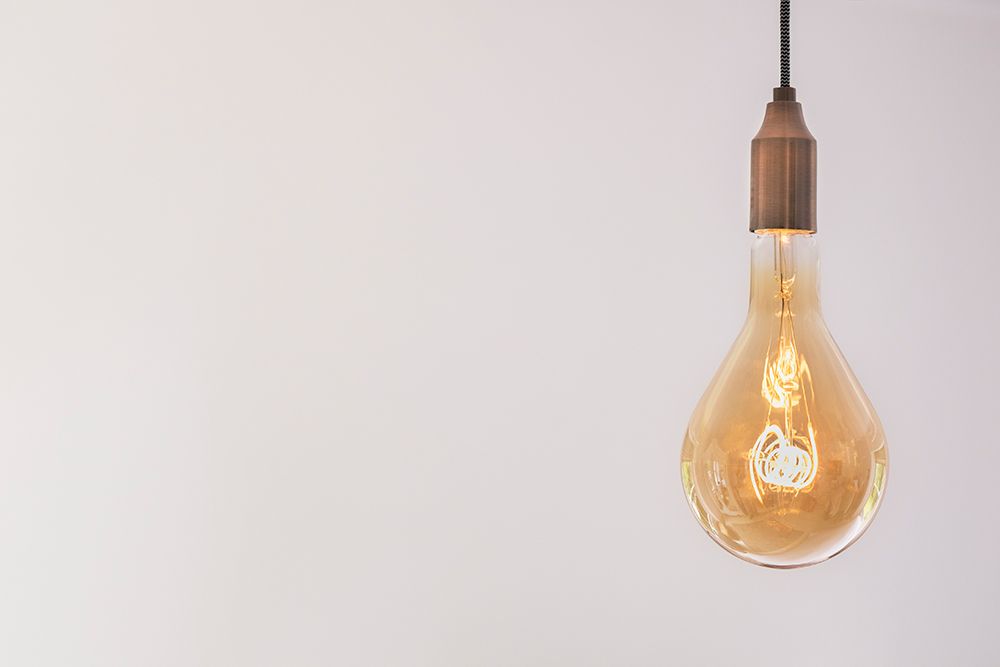
These are currently the most efficient, commonly available option on the market and typically use 90% less energy than incandescent bulbs.
LED vs Incandescent
The main benefits of LED bulbs compared to incandescent bulbs focus on energy efficiency, cost to run, longevity and environmental impact. As previously mentioned, LED bulbs typically use 90% less energy than incandescent bulbs and can turn 70% of their energy into light. The energy efficiency of LED makes them far better for the environment, as less energy needs to be produced to power them.
Whilst incandescent bulbs were often cheaper than LED bulbs, this is changing as LED technology becomes more and more common, and the overall cost, when taking into account the energy costs over the lifetime of LEDs compared to the energy costs of incandescent bulbs makes LED far more cost effective.
Incandescent bulbs have a far shorter lifespan than LED bulbs, so whilst the one purchase of an incandescent may be cheaper, LEDs will not need to be replaced so often.
LED Vs CFL
CFL bulbs were widely available before LEDs really took off, but LEDs have now covered all bases. With more attractive designs of LED bulbs, they look far better than CFL bulbs and CFLs contain a small amount of mercury, so need to be recycled or disposed of properly and handled carefully. This isn’t an issue with LED bulbs.
Perhaps the most common complaint about CFL bulbs is that they take some time to reach full brightness, so when you first switch them on, they can appear dim. This again is not an issue with LED bulbs.
LED vs Halogen
Halogen bulbs are technically a form of incandescent lighting and are far less efficient than LED bulbs, but are, as mentioned earlier 20% to 30% more efficient than traditional incandescent bulbs.
Halogens offer the look of a traditional bulb, and are often marketed as eco alternatives to incandescent bulbs but a no match compared to the energy efficiency and longevity of LEDs.
Incandescent vs CFL vs LED vs Halogen
Incandescent bulbs are less efficient than other types of lighting, with just 5% of their energy used converted into visible light. They typically have a luminous efficacy for 120V operation is 16 lumens per watt, compared to 60 lm/W for a compact fluorescent bulb or 150 lm/W for some white LED bulbs.
Whilst halogen downlights can be initially cheaper, the ongoing cost savings in the form of energy saving makes LED downlights a far more cost-effective option.
The cost of running a light bulb varies on the bulb type. LED bulbs are cheaper to run than CFL, incandescent and halogen. On average 15W LED bulb costs around £0.002 per hour to run, a 20W CFL bulb costs round £0.003 per hour, a 70W halogen bulb costs around £0.008 per hour and a 100W incandescent bulb costs around £0.012 per hour.
If you have had issues with LED bulbs burning out, it could be one of a number of reasons. You may be trying to dim non dimmable LED bulbs (not all LED bulbs are dimmable), or you could be using dimmable LED bulbs with a non-LED compatible dimmer. In this case, switch to using a trailing edge dimmer switch.
If you find yourself burning through multiple LED bulbs quickly, the mains in your house might be too high. In UK homes, the electricity should fluctuate around 230V at 50 Hz. If this is the problem, you should contact an electrician to test, and your electrical provider to correct the issue.
LEDs can sometimes overheat if used with a fixture that isn't LED compatible. This can cause them to burn out. If none of these reasons are the cause, then you could have used a bad batch of LED bulbs. In which case, contact the manufacturer.




